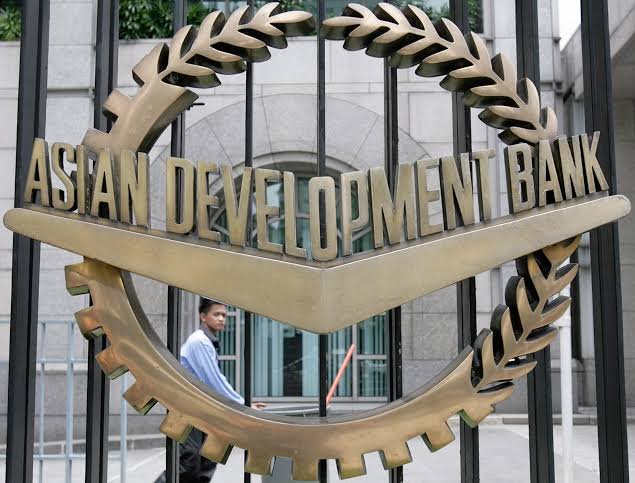Travel Guides & Articles
India hikes Kuwait’s flying rights by 50% to 18,000 weekly seats

NEW DELHI: In a rare move, India has enhanced the flying rights of a Gulf nation when it raised weekly seats to 18,000 per week between India and Kuwait from earlier 12,000 — a raise of 50%. Now airlines of both sides can deploy 18,000 seats per week. The agreement was signed by India’s aviation secretary Samir Kumar Sinha and Kuwait DGCA president Sheikh Hamoud Al-Mubarak. Kuwait gets more bilaterals after 18 years, when its capacity was raised from 8,320 to 12,000.The enhancement comes as airlines of both countries had long ago fully utilised their share of allowed allowed seats. Air India Express, Akasa, IndiGo, Jazeera Airways and Kuwait Airways operate nearly 40 flights daily between the two countries. At 54 weekly flights, Kuwait Airways is is the biggest operator followed by IndiGo at 36.With an increase in demand for travel, Kuwait — like several other regions especially in the Middle East including Dubai — had been seeking a hike in bilaterals. In the last one year, India has signed new air service agreements with Thailand, Vietnam, Indonesia and Uzbekistan.The Modi govt since 2014 had been following a policy for bilaterals that keeps in mind the interest of Indian carriers and has been taking steps to increase their share in the international traffic flying in and out of the country. The steps taken include massive capex in augmenting Indian airports’ capacity so that they can become big global hubs; divesting Air India and AI Express; letting new airlines like Akasa take wings and enabling IndiGo to grow despite massive global supply chain constraints.
Travel Guides & Articles
Pickyourtrail expands omnichannel presence across India with 3 stores

Pickyourtrail has announced the launch of three new offline stores across Chennai, Kochi, and Vapi this month. This expansion marks another milestone in the brand’s omnichannel journey, seamlessly blending digital convenience with the trust of in-person consultations. With these additions, Pickyourtrail moves closer to its vision of opening 50+ stores across India in the next 12–18 months, making personalised international holidays more accessible to travellers nationwide.
A recent BCG report highlights India as one of the fastest-growing global travel markets, with domestic leisure travel expected to grow at 12% annually until 2040, and international travel at 10%. This surge is driven by Millennials and Gen Z, who are prioritising discovery, personalisation, and hybrid planning journeys that combine AI tools with human expertise. Reflecting this trend, Pickyourtrail has recorded a 23% rise in hybrid bookings, with such customers spending 12% more on trips, opting for longer stays, and showing stronger repeat and referral behaviour.
Anchored in its proprietary AI-driven platform, the brand’s omnichannel strategy has already reduced decision fatigue by 20% for travellers. Its growing network of offline stores is designed to complement this digital backbone, providing reassurance through physical touchpoints. The company’s stores have seen a 3–4% lift in conversions in the past six months, reinforcing the need for high-trust, human-led experiences in international travel planning.
“With every new store, we see not just more walk-ins and conversions, but also a stronger sense of confidence among customers,” said Hari Ganapathy, CEO & Co-founder of Pickyourtrail. “International holidays are big decisions for families, and our stores help bridge the gap between aspiration and action by offering personal assurance alongside digital convenience.”
He added, “India is at a turning point in the way it travels. Younger explorers want flexibility, not friction, and our omnichannel approach is designed around that insight. Whether customers start online and finish in-store, or vice versa, our goal is to provide the same level of care and clarity at every stage.”
As India’s travel landscape grows more aspirational and experience-driven, Pickyourtrail continues to double down on its mission of making world-class, customised holidays accessible to more Indians. Several new store launches are already planned for the coming quarter, reinforcing the brand’s commitment to shaping the future of travel through a perfect balance of technology and human touch.
Travel Guides & Articles
ADB partners with India for USD 126.42mn loan to boost Uttarakhand tourism

The Asian Development Bank (ADB) and the union government have signed a loan agreement worth USD 126.42 million to promote sustainable and climate-resilient tourism in Uttarakhand. The initiative, announced by the finance ministry, aims to transform Tehri Lake into a key hub while positioning the state as a diversified, all-weather tourism destination. Officials highlighted that this project aligns with Uttarakhand’s broader strategy of driving rural growth through sustainable tourism models.
The project focuses on Tehri Garhwal, one of Uttarakhand’s most climate-vulnerable regions. It is expected to benefit more than 87,000 residents and 2.7 million annual visitors by improving infrastructure, planning, and essential services. The plan emphasises better sanitation, waste management systems, and disaster preparedness to ensure safety and sustainability for both locals and travellers.
According to Juhi Mukherjee, joint secretary in the Department of Economic Affairs, the ADB loan directly supports the government’s tourism policy for Uttarakhand. She stressed that Tehri Lake has been identified as a priority zone for development, providing the state with opportunities to diversify income streams while preserving ecological balance.
ADB’s India Resident Mission officer-in-charge, Kai Wei Yeo, said the project is a model for integrating rural development with tourism. He explained that adopting a multisector approach would generate jobs, build climate resilience, and support Uttarakhand’s long-term economic growth. This reflects ADB’s larger vision of combining infrastructure investment with community-focused outcomes.
Key interventions under the project include climate-resilient infrastructure, nature-based solutions to address landslide and flood risks, and enhanced institutional capacity. The initiative also focuses on inclusive tourism, with a strong role for women, youth, and the private sector. These interventions are designed to create a more equitable and participatory tourism ecosystem in the region.
Notable features of the programme include a livelihood matching grant for women- and youth-led tourism businesses, universal access design to ensure inclusivity for persons with disabilities, and disaster risk management initiatives in pilot villages. Together, these measures aim to position Uttarakhand as a global example of sustainable tourism development while empowering local communities.
Travel Guides & Articles
What is the Indo-Nepal Treaty of Friendship which allows Visa-Passport free travel between the two countries, India-Nepal borders are open because…

The 1950 Peace and Friendship Treaty between India and Nepal is the corner stone of India-Nepal relations.
Nepal-India border: Amid the high-tension political turmoil in Nepal, one of the treaties that is being widely discussed in both India and Nepal is the 1950 Peace and Friendship Treaty between both the neighbouring countries. The 1950 Peace and Friendship Treaty between India and Nepal is the foundation of the relationship between the two countries governing how both the countries would treat the citizens of each other. Under this treaty, citizens of both countries have the right to travel, settle, trade and buy property without visa, making the Nepal-India border open. Here are all the details you need to know about 1950 India-Nepal Peace and Friendship Treaty.
Why are India and Nepal important for each other?
It is widely acknowledged that Nepal is dependent on India for trade and employment, while for India Nepal is like a buffer state between China.
Why Nepal has been demanding changes in the Treaty?
Nepal has been demanding changes in this treaty many times citing several reasons. Nepal says that this treaty was signed in 1950 with the Rana ruler, who was unpopular, and India gets more benefits in it. Nepal especially objects to Articles 2, 6 and 7 because according to these articles, Nepal has to inform India before making relations with third countries and the citizens of both countries get equal rights.
According to what Nepal claims, when Nepal bought weapons from China in 1988, India considered it a violation of the treaty and closed the border for 17 months, due to which Nepal had to face economic and security crisis. This is why Nepal considers this treaty as a restriction on its independent foreign policy and sovereignty.
Story highlights:
- The 1950 Peace and Friendship Treaty is a treaty between India and Nepal.
- The treaty covers various issues including visa issues.
- The treaty is in news due to the recent political turmoil in Nepal.
India-Nepal relations
India-Nepal relations are based on deep cultural, religious and familial ties, but disputes have repeatedly arisen over the 1950 treaty. Nepal considers it unequal, while India calls it a guarantee of mutual trust and cooperation. The treaty is in news as Nepal is undergoing a political turmoil
-

 Business2 weeks ago
Business2 weeks agoThe Guardian view on Trump and the Fed: independence is no substitute for accountability | Editorial
-
Tools & Platforms1 month ago
Building Trust in Military AI Starts with Opening the Black Box – War on the Rocks
-

 Ethics & Policy2 months ago
Ethics & Policy2 months agoSDAIA Supports Saudi Arabia’s Leadership in Shaping Global AI Ethics, Policy, and Research – وكالة الأنباء السعودية
-

 Events & Conferences4 months ago
Events & Conferences4 months agoJourney to 1000 models: Scaling Instagram’s recommendation system
-

 Jobs & Careers2 months ago
Jobs & Careers2 months agoMumbai-based Perplexity Alternative Has 60k+ Users Without Funding
-

 Podcasts & Talks2 months ago
Podcasts & Talks2 months agoHappy 4th of July! 🎆 Made with Veo 3 in Gemini
-

 Education2 months ago
Education2 months agoMacron says UK and France have duty to tackle illegal migration ‘with humanity, solidarity and firmness’ – UK politics live | Politics
-

 Education2 months ago
Education2 months agoVEX Robotics launches AI-powered classroom robotics system
-

 Funding & Business2 months ago
Funding & Business2 months agoKayak and Expedia race to build AI travel agents that turn social posts into itineraries
-

 Podcasts & Talks2 months ago
Podcasts & Talks2 months agoOpenAI 🤝 @teamganassi

